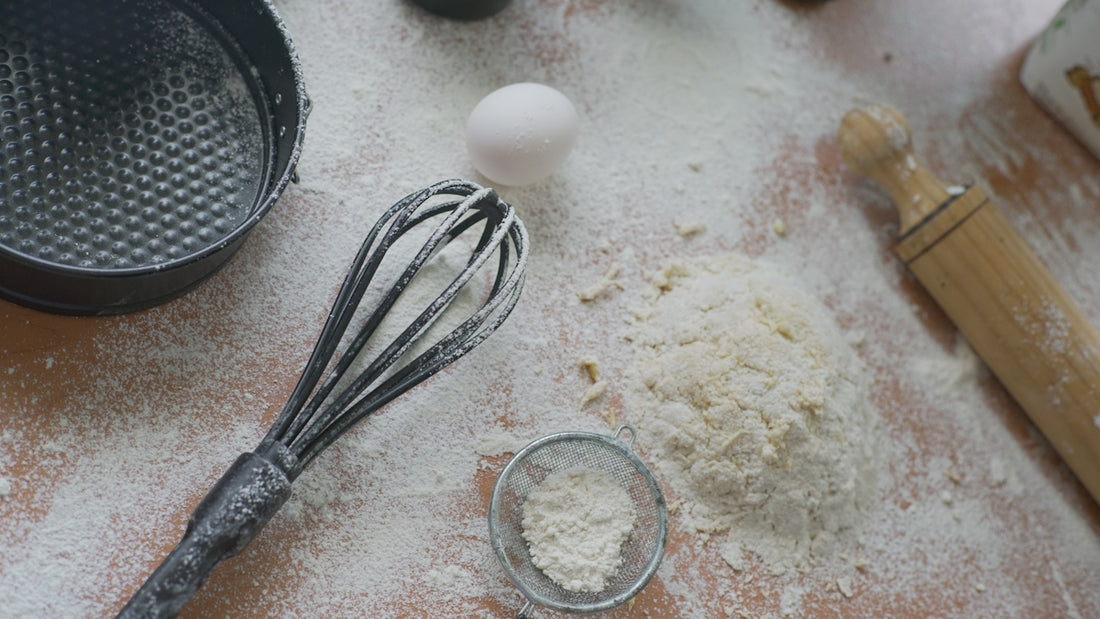
Best Sourdough Baking Tips and Tricks for Effortless Homemade Bread
There's something truly magical about baking sourdough bread at home. From the initial creation of a sourdough starter to the joy of pulling a perfectly baked loaf from the oven, the process of sourdough baking is both an art and a science. Whether you're a seasoned baker or a newcomer intrigued by the complexities of wild yeast fermentation, this guide will equip you with essential sourdough baking tips and tricks to make your homemade sourdough journey effortless and rewarding.
Understanding the Sourdough Starter
The cornerstone of any great sourdough bread recipe is a healthy sourdough starter. This living culture of wild yeast and bacteria is what gives sourdough its characteristic flavor and rise.
How to Create and Maintain a Sourdough Starter
To start your own sourdough adventure, you'll need to create and maintain a sourdough starter. Here's a simple method to guide you through:
Ingredients and Equipment:
- Equal parts of flour and water
- A glass jar or a specialized sourdough starter jar like the Professional Baking Tools 24 Oz Sourdough Starter Jar
Daily Feeding Routine:
Each day, discard half of your starter and replenish it with equal amounts of flour and water. Consistency is key to keeping your starter active and healthy.
Sourdough Starter Feeding Schedule:
Feed your starter every 24 hours if kept at room temperature. If you prefer less frequent feedings, storing it in the refrigerator and feeding it once a week will suffice.
Troubleshooting:
If your sourdough starter has an off smell or mold growth, it might need more frequent feedings or a reset by starting fresh.
Ready-Made Options
If you'd rather skip the initial stages of wild yeast fermentation, consider using Nonna Bella Dehydrated Sourdough Starter. It offers a Tuscan heritage culture, providing a shortcut to delicious homemade sourdough.
Baking the Perfect Loaf
Once your starter is active and bubbly, it's time to tackle the art of baking sourdough bread.
How to Bake Sourdough Bread
Recipe Basics:
Combine your sourdough starter, flour, water, and salt. Allow the dough to rest and ferment, developing complex flavors and a good crumb structure.
Sourdough Fermentation Timing:
The fermentation process is where magic happens. Longer fermentation times can lead to more flavorful and digestible bread, but be mindful of over-proofing.
Shaping Techniques:
Proper shaping ensures an even bake and beautiful loaf. Practice shaping techniques that suit your bread style, whether it's a boule, batard, or a rustic artisan loaf.
Scoring for Success:
Master the art of scoring with simple lines or intricate designs to control the bread's expansion in the oven. Tools like a lame found in the Lame Bread Proofing Basket Kit can aid in achieving precise cuts.
Tools to Enhance Your Baking
Investing in quality tools can transform your sourdough experience. Consider using a Nonna Bella 5kg Digital Kitchen Scale for accurate measurements, ensuring consistency in your sourdough bread recipe.
Storage and Longevity of Your Sourdough Starter
Proper storage is crucial for maintaining an active starter:
- Room Temperature vs. Refrigeration:
- Keeping your starter at room temperature means more frequent feedings. Refrigeration slows activity but reduces maintenance.
- How to Store Sourdough Starter:
- Use an airtight container and leave some space for expansion. Regularly check its health, especially if stored in cooler environments.
Health Benefits of Sourdough
Interestingly, sourdough may be a healthier choice for some individuals. It's known that the fermentation process lowers the glycemic index, making it a potentially suitable option for diabetics. Sourdough fermentation breaks down gluten and phytic acid, making nutrients more bioavailable and potentially more digestible for those with gluten sensitivities.
Final Thoughts
Exploring the world of homemade sourdough is an enriching experience, filled with learning and delectable rewards. With the right tools, such as the ones available on italiansourdough.com, and a bit of patience, you can achieve bakery-quality artisan bread.
From understanding sourdough starter vs yeast, to diagnosing common sourdough bread troubleshooting issues, the key is practice and passion. So roll up your sleeves, embrace My sourdough life journey, and enjoy the delicious payoff of making easy sourdough bread right in your own kitchen.
Happy Baking!
For more tips, recipes, and tools to perfect your sourdough skills, explore our offerings at italiansourdough.com.
